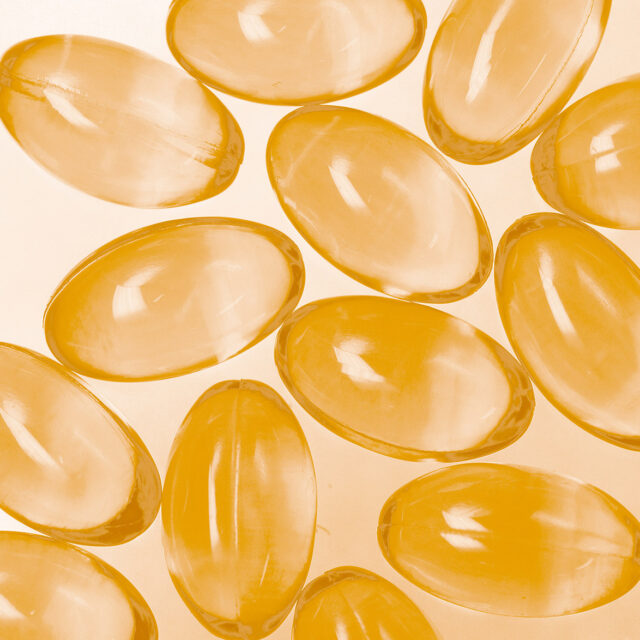In 1972, the Danish pharmaceutical company H. Lundbeck A/S synthesised an organic compound known as citalopram. Citalopram was found to have a significant antidepressant effect as a selective serotonin reuptake inhibitor (SSRI). The new drug was launched by Lundbeck in 1989 under the brand name Cipramil® and was very successful.
Citalopram is a racemate, namely a mixture of two types of molecules known as enantiomers. The two enantiomers found in citalopram are R-citalopram and S-citalopram (escitalopram). Between 1980 and 1987, Lundbeck carried out extensive research to find a way of obtaining the citalopram enantiomers. After the commonly known separation methods failed, Lundbeck discovered that one of the intermediate compounds used in the manufacture of citalopram (the diol) could be effectively separated, unlike citalopram itself, into its component enantiomers, which could then be converted into the enantiomers of citalopram through stereoselective synthesis, by ring closing the diol enantiomers. In this way, the enantiomers of citalopram (including escitalopram, which is mainly responsible for the drug’s therapeutic effects) became available for the first time.
In 2002, Lundbeck launched Cipralex®, an antidepressant containing the active substance escitalopram. Escitalopram and the method of obtaining it (through ring closing of the diol enantiomers) were protected by a European patent and an SPC. It did not take long, however, before the first generic drug manufacturers attacked these rights in order to clear a path to the European market.
In first instance proceedings, Alfred E. Tiefenbacher GmbH and several other generic drug companies were able to successfully invalidate Lundbeck’s patent and SPC in a number of European countries, including Germany, the UK, the Netherlands and Belgium. A legacy firm of HOYNG ROKH MONEGIER took over the case for Lundbeck in the Netherlands and Belgium and eventually succeeded in having the patent and SPC upheld and obtaining an injunction against the generic drug companies which had entered the market.
In the Netherlands, the lower court’s decision was partially reversed on appeal. The appellate court concluded that the method claims were non-obvious but that the product claims were obvious per se as a skilled person would be aware that citalopram contains two enantiomers which could have different benefits. The court of appeal stated that it is irrelevant whether it is possible to obtain the enantiomers through obvious means. This decision was of little use to Lundbeck, however, as it could not prove that the generic drug companies, which manufacture their products in India, used the patented method.
Lundbeck appealed to the Supreme Court of the Netherlands which eventually reversed the court of appeal’s decision with respect to the validity of the product claims. The Supreme Court confirmed – in line with the principle of absolute substance protection and the EPO’s case law– that a known substance can be inventive if the patentee was the first to make it available to the public through a new and inventive method.
In Belgium, the SPC had been declared invalid on the ground that, according to the lower court, escitalopram was the ‘same product’ as citalopram within the meaning of Article 1(b) of the SPC Regulation. As citalopram had been the subject of an earlier SPC and marketing authorisation, the court found that the requirements of Article 3(c) and (d) SPC Regulation were not met. The decision was moreover declared immediately enforceable.
On appeal, a two-step approach was taken. First, the immediate enforceability of the decision was attacked, leading to the setting aside of the judgment on this point. Subsequently, the decision itself was successfully contested. The patent, including the compound claim, was upheld by the Brussels Court of Appeal, based on reasoning similar to that expounded by the Dutch Supreme Court. The arguments for invalidity raised against the SPC were also rejected, on the ground that, in order to be considered the same for purposes of Article 3(c) and (d) SPC Regulation, the products must be strictly identical, a hurdle that was not met in the case of citalopram and its enantiomer escitalopram. This two-pronged strategy enabled Lundbeck, during the appellate proceedings, to obtain a preliminary injunction against another generic drug manufacturer that had entered the market after the lower court’s decision.
This case is a good example of how patent enforcement and regulatory measures, in which areas we assisted Lundbeck, can provide complementary protection for right holders. Indeed, when Lundbeck could not enforce its patent, it was able to achieve market protection though regulatory measures.
In parallel with these proceedings, Lundbeck took various actions on the regulatory front based on data protection violations in the registration files for the generics. Upon the receipt of official warning letters sent on behalf of the marketing authorization (MA) holder, the Belgian authorities (the FAMHP) spontaneously withdrew the generic MAs, to the best of our knowledge for the first and only time in such a context. Our firm handled the subsequent litigation before the administrative courts and coordinated similar actions at the local level in several European countries. In this way, we were able to prevent significant pricing and reimbursement decreases, which would have impacted Lundbeck both within and outside Belgium via the international reference pricing system.

